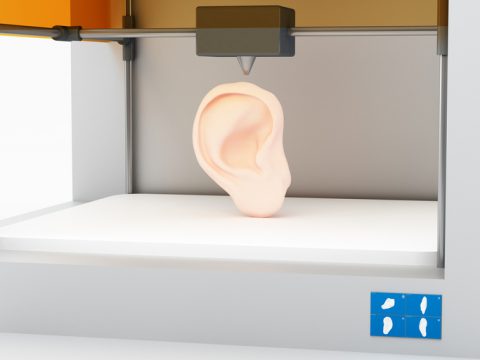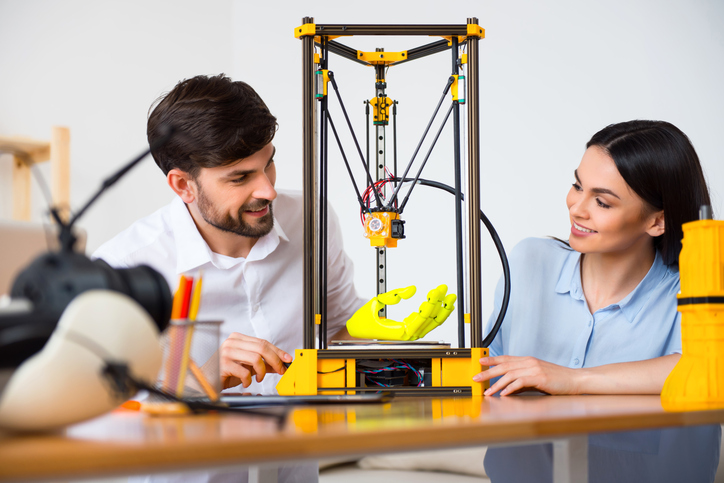
Along with Big Data, 3D printing has been one of the hottest technology topics for years.
But what can it actually do? And what are the applications for healthcare?
As it turns out, 3D printing already is having a big impact on healthcare, an industry that is adapting new technology relatively quickly. That includes electronic healthcare records and software systems that allow medical professionals to share patient data in real time over multiple systems.
And now, it includes 3D printing.
How Does 3D Printing Work?
Before getting into how it is applied, here’s a quick overview of how 3D printing works.
Simply put, 3D printing is technology that allows making three-dimensional solid objects from a digital file. It’s accomplished through additive processing, which involves laying down layers of material one at the time until the object is created.
Software enables creation of a “virtual” design of the desired object. A 3D printer then builds a model of the object based on that design.
The metaphorical example is that 3D printing is like baking a loaf of bread in reverse. Rather than putting bread into the oven and then slicing it once baked, this process is like creating one slice of bread at the time and then putting them all together to make a loaf.
While it operates much like a home ink printer, 3D printers don’t use ink, of course. Instead, they build models using layers of molten plastic and fusing them together. The fusing is typically accomplished with ultraviolet light or adhesive.
3D Printing in Healthcare
Some hospitals and medical clinics already are making use of 3D printing to improve patient care. As noted by the Harvard Business Review, unlike many new technologies in healthcare, 3D printing is starting at a reasonable price point.
That’s good news for healthcare organizations and patients alike, especially as aging Baby Boomers begin to put more demand on healthcare organizations.
The following are some of the ways 3D printing already has been used.
Skin grafts. Using 3D printing, doctors are able to create skin grafts for burn victims perfectly suited for their particularly burn area.
Airway splints for babies. Some babies have a condition known as tracheobronchomalacia (TBM), which makes the airways around their lungs prone to collapsing. The splints can be produced for just $10 each and are designed to grow as the baby grows. There already have been several successful tests.
‘Bionic’ ear. At Princeton University, researchers were able to use 3D printing to merge biological tissue with electronics to create an ear that is capable of picking up frequencies beyond the normal range of human hearing.
Facial prosthesis. University of Miami researchers have used 3D printing to create facial prosthetics for eye cancer patients at a fraction of the cost. Typical prosthetics cost as much as $10,000 or more to create and can be weeks in the making.
Using 3D printers, the university researchers created a facial prosthesis in just a matter of hours. By employing topographical scanning, doctors scanned the undamaged side of the face and the damaged side. The software program meshed the two together to create a 3D image of the face, and the 3D printer created a molded rubber mask of the patient’s face with pigmentation to match skin tone.
Casts. Many 3D printed casts for broken limbs already are in widespread use. The casts, created to match the patient’s exact limb, have led to bones healing 40 percent to 80 percent faster, according to the Harvard Business Review.
Pre-surgical planning. By creating a 3D model of a specific patient’s organ, surgeons can better plan how to approach surgery in a way that is safer. It also can save time, meaning that patients are kept under anesthesia for less amount of time. The models give surgeons time to practice different techniques, refining them before they enter the operating room.
These are just some of the uses of 3D printing, yet another technology that is already beginning to revolutionize healthcare. Not only is it making medical procedures less expensive, but also leading to better health outcomes for patients.









